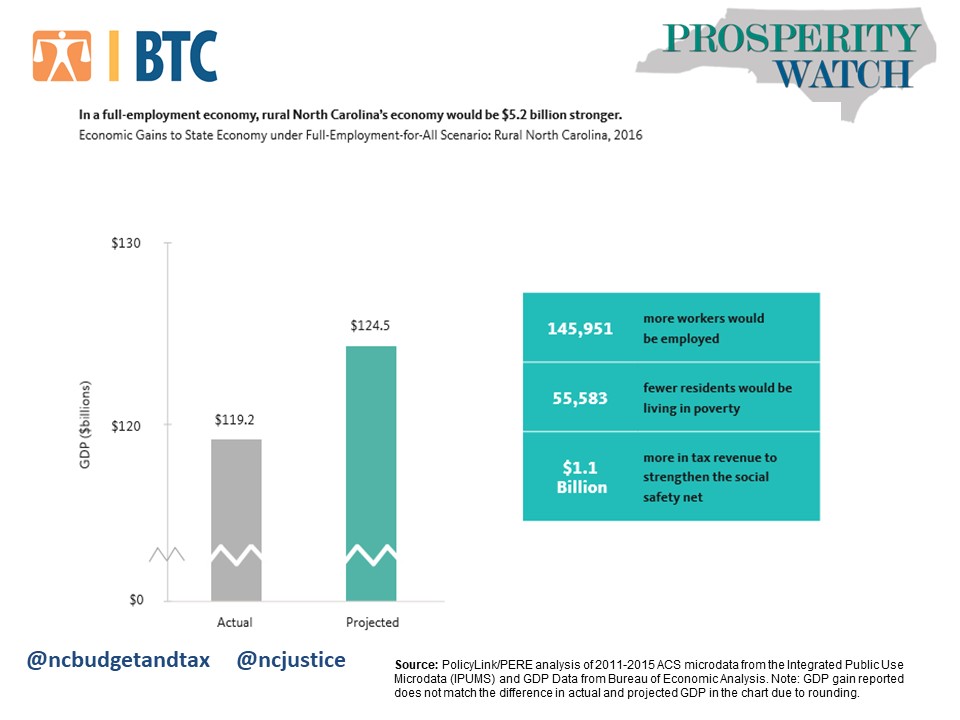Prosperity Watch, Issue 88, No. 1
July 2, 2018
While low national and state unemployment rates are prompting talk of having achieved “full employment”, that is far from the reality for much of North Carolina. Most small towns and rural communities across North Carolina still have not reached full employment, which is preventing them from realizing their full economic potential. A new analysis shows that achieving full employment across rural North Carolina would add 145,000 jobs, pull more than 55,000 North Carolinians out of poverty, and add $1.1 billion to public coffers.

North Carolina must prioritize reaching full employment for all communities and social groups. Full employment in the state would be characterized by an unemployment floor of 4 percent with rural labor force participation rates of at least 71 percent for men and 57 percent for women. If all of rural North Carolina achieved full employment, the unemployment rate for Black men and women, Native American men, and mixed race women in rural North Carolina would drop by 7 to 11 percentage points. Other groups would experience drops of 2 to 5 percentage points. Closing employment disparities across geography, race, and gender would grow the workforce, meet the needs of employers, and increase the state’s competitiveness in the national economy and decrease poverty creating economic stability for workers in rural areas across the state.
Historic legacies and current barriers to opportunity mean that struggling rural areas across the state often have higher concentrations of people of color. African Americans constitute around 20 percent of North Carolina’s population but represent 45 percent of residents in rural areas that are economically distressed. As a result, unemployment disparities also fall along racial lines. In 2016, the unemployment rate for Black workers was 11.4 percent, almost two times higher than the unemployment rate for White workers (5.9 percent). People of color also face higher levels of unemployment than whites across all education levels, further evidence of how pervasive the barriers to opportunity are in many communities.
 Justice Circle
Justice Circle